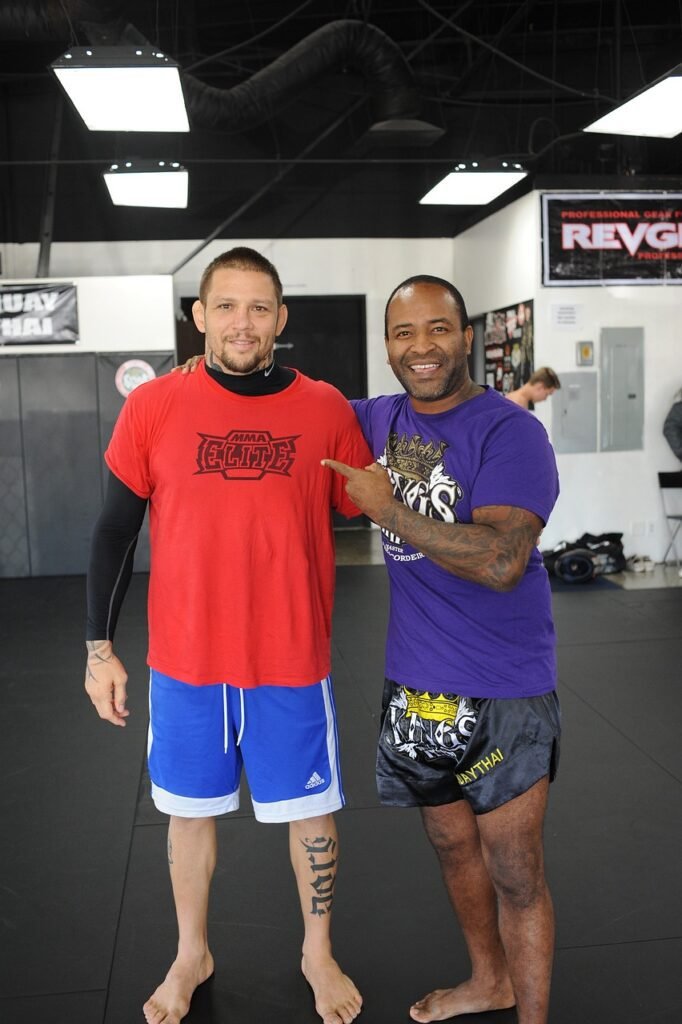In “Strategic Back Control Tactics,” you’ll dive into essential techniques for mastering the art of maintaining control during grappling situations. This guide walks you through the most effective strategies to secure dominant positions, ensuring you stay one step ahead of your opponent. Whether you’re a seasoned practitioner or just starting out, these tactics will equip you with the knowledge and confidence to excel in your training and competitions. Have you ever found yourself wondering how the pros in martial arts maintain such a seemingly effortless control over their opponents’ backs? If you’re looking to upgrade your grappling game, understanding the subtle but powerful techniques of back control can make all the difference. Let’s delve into the realm of “Strategic Back Control Tactics” to help you gain a more dominant edge in your practice.

Why Back Control is Crucial
In the world of martial arts and grappling, maintaining control over your opponent’s back can be a game-changer. It provides you with a strategic advantage, often putting you in the perfect position to end a match or advance your position. But why is back control so critical, and how can you master it to its fullest extent?
The Power of the Back Mount
When you have the upper hand by securing the back mount, you control the pace and direction of the fight. This position allows for a broad range of offensive maneuvers while making it extraordinarily difficult for your opponent to counter-attack. Essentially, you’re in the driver’s seat.
Psychological Impact
Securing back control does more than physically dominate your opponent; it psychologically undermines them as well. Being in a compromised position can erode your opponent’s confidence, leading them to make mistakes that you can capitalize on.
The Principles of Effective Back Control
Before we get into the nitty-gritty techniques, it’s essential to understand the broader principles that underpin effective back control. These principles serve as the foundation upon which all successful tactics are built.
Proper Positioning
Proper positioning means aligning your body in a way that maximizes your control while minimizing your opponent’s options for escape. Generally, this involves maintaining your chest closely aligned with their back and keeping your hooks (feet) securely inside their thighs.
Pressure and Balance
Creating constant pressure while carefully balancing your own weight is another crucial principle. The right balance means applying enough pressure to control but not over-committing to the point where you become unstable.
Hand Fighting
Hand fighting is especially important when you’re trying to secure submissions from back control. Grips are everything. Knowing where and how to place your hands can often be the difference between a successful submission and a failed attempt.
Techniques for Securing Back Control
With the principles in mind, let’s break down some specific techniques that can help you secure and maintain back control.
The Seatbelt Grip
One of the most fundamental grips for controlling your opponent’s back is the Seatbelt Grip. Here’s how you can apply it effectively:
- Top Arm Over the Shoulder: Your top arm should go over one shoulder while the other wraps under the opposite armpit.
- Grip Tight: Lock your hands together while keeping your head close to theirs to reduce space.
- Squeeze: Apply a strong but controlled squeeze to maintain the grip while you look for openings for potential submissions.
The Figure-Four Body Lock
The Figure-Four Body Lock is another potent technique for establishing unyielding control over your opponent. It’s particularly useful against larger adversaries.
- Position Your Legs: Cross one leg over the other and hook it behind your opposite knee, creating a figure-four with your legs.
- Squeeze and Adjust: Apply inward pressure with your legs to secure the lock while using your hands and arms to control your opponent’s upper body.
Maintaining Hooks
Hooks are essential for maintaining back control. They serve as anchors and provide additional points of leverage. Here’s how to effectively use your hooks:
- Place Inside Thighs: Position your feet inside your opponent’s thighs.
- Stretch and Pull: Use a combination of stretching your legs and pulling with your arms to apply full-body pressure.
Table of Key Techniques for Securing Back Control
| Technique | Key Steps |
|---|---|
| Seatbelt Grip | Top arm over shoulder, grip tight, squeeze |
| Figure-Four Body Lock | Position legs, squeeze and adjust |
| Maintaining Hooks | Place inside thighs, stretch and pull |
Techniques for Maintaining Back Control
Securing back control is only the first part; maintaining it is another challenge altogether. Here are some proven methods to keep your dominant position.
The Lockdown
The Lockdown is a specific strategy designed to consolidate your position once you’ve secured it. It involves maximizing your grip strength and leg positioning.
- Tighten Your Grips: Make sure your grips remain tight and close.
- Leg Pressure: Continuously apply pressure with your legs to minimize movement from your opponent.
- Read Adjustments: Be vigilant about reading your opponent’s movements and adjust accordingly.
The Double Underhooks
Utilizing double underhooks can provide exceptional control over your opponent, making it almost impossible for them to escape.
- Position Under Shoulders: Get both of your arms underneath your opponent’s shoulders.
- Clasp Hands: Clasp your hands together and pull towards your body to limit their movement.
Stopping the Roll
Your opponent may attempt to roll out of your control. Being aware of how to counter this can make all the difference.
- Anticipate the Roll: Sense when your opponent is attempting to roll.
- Shift Your Hips: Quickly adjust your hips to counter their movement.
- Regain Hooks: If you lose your hooks, immediately work to reestablish them.
Table of Techniques for Maintaining Back Control
| Technique | Key Steps |
|---|---|
| The Lockdown | Tighten grips, leg pressure, read adjustments |
| Double Underhooks | Position under shoulders, clasp hands |
| Stopping the Roll | Anticipate roll, shift hips, regain hooks |

Techniques for Regaining Lost Back Control
Even the best practitioners lose their back control from time to time. How you respond in these situations can be crucial. Here are some techniques to help you regain your lost advantage.
The Chair Sit
The Chair Sit technique is an effective way to regaining back control when your opponent is trying to escape by turning into you.
- Position Yourself: When your opponent starts to turn into you, scoot your hips forward and position yourself as if you were going to sit on an imaginary chair.
- Anchor Your Legs: Use your legs to anchor your position.
- Reestablish Hooks: As you gain control, reestablish your hooks and go back to your preferred grip.
The Mat Return
If your opponent manages to stand up and break your control, the Mat Return technique can bring them back down.
- Grasp Around Waist: Position your arms around their waist from behind.
- Lift and Tilt: Lift them slightly off the ground and tilt backward.
- Control Descent: Guide their fall to the mat while reestablishing your hooks.
Side Scramble Recovery
In situations where your opponent scrambles to their side, you need to be swift to recover your position.
- Follow Their Movement: Keep your chest close and move with them.
- Rehook Your Legs: Apply your hooks as soon as you can.
- Reapply Grips: Reestablish your hand holds to solidify control.
Table of Techniques for Regaining Lost Back Control
| Technique | Key Steps |
|---|---|
| The Chair Sit | Position yourself, anchor legs, reestablish hooks |
| The Mat Return | Grasp around waist, lift and tilt, control descent |
| Side Scramble Recovery | Follow movement, rehook legs, reapply grips |
Strategies for Transitioning to Back Control
Sometimes the best defense is a good offense. Knowing how to transition into back control can be just as important as maintaining it. Here are some effective strategies to transition smoothly.
The Arm Drag
The Arm Drag is a versatile technique that can easily set you up for back control.
- Grip the Arm: Secure a grip on your opponent’s arm near the wrist and tricep.
- Drag Across Body: Pull the arm across your body while stepping to the side.
- Move to Back: Use the motion to transition to their back while establishing hooks and grips.
From Guard to Back
You can also transition to back control from a guard position, an advantageous approach when grappling from the ground.
- Secure Guard: Position yourself securely in a guard position.
- Shift Hips: Shift your hips to create an angle.
- Bridge and Turn: Use a bridging motion to turn your body and transition to your opponent’s back.
The Kimura Trap
The Kimura Trap is an advanced technique that can lead directly to back control.
- Secure Kimura Grip: Lock in a Kimura grip from any position.
- Roll Under: Perform a roll under your opponent using the leverage from the grip.
- Establish Back Control: As you finish the roll, transition to back control by securing hooks and grips.
Table of Techniques for Transitioning to Back Control
| Technique | Key Steps |
|---|---|
| The Arm Drag | Grip the arm, drag across body, move to back |
| From Guard to Back | Secure guard, shift hips, bridge and turn |
| The Kimura Trap | Secure Kimura grip, roll under, establish back control |

Advanced Tactics for Mastery
Once you’ve got the basics down, it’s time to dive into advanced tactics that can help propel your back control game to the next level.
The Bow and Arrow
The Bow and Arrow submission is not only a way to secure victory but also reinforces your control over your opponent’s back.
- Grip Collar and Leg: Establish a grip on your opponent’s collar with one hand and their leg with the other.
- Stretch and Pull: Simultaneously stretch your legs while pulling on their collar and leg to maximize tension.
- Apply Pressure: Apply the final pressure needed to secure the submission.
The Reverse Triangle
This advanced choke can be a devastating way to not only submit but also maintain your position.
- Position Legs: Frame your legs around your opponent’s head and one arm in a triangle shape.
- Lock the Triangle: Lock your feet together to form the triangle.
- Apply Squeeze: Use your legs to squeeze and apply choke pressure.
The Rear Naked Escape Counter
Should your opponent attempt to escape your rear mount, you can use this counter to maintain control.
- Position Hands: Place one hand behind their head and the other to block their elbow.
- Pressure and Shift: Apply pressure while shifting your hips to counter their movement.
- Reestablish Control: Use the moment to reestablish your back control securely.
Table of Advanced Tactics for Mastery
| Technique | Key Steps |
|---|---|
| The Bow and Arrow | Grip collar and leg, stretch and pull, apply pressure |
| The Reverse Triangle | Position legs, lock the triangle, apply squeeze |
| Rear Naked Escape Counter | Position hands, pressure and shift, reestablish control |
Troubleshooting Common Issues
Even with all these techniques, certain problems can arise that impede your ability to maintain back control. Here’s how to troubleshoot common issues.
Opponent Peeling Off Hooks
If your opponent keeps peeling off your hooks, you need to address it fast.
- React Quickly: As soon as you feel your hooks being attacked, react quickly by shifting your weight.
- Rehook Immediately: Don’t give up space; reapply your hooks as quickly as possible.
- Adjust Position: Consider shifting your position slightly to make it harder for your opponent to reach your hooks.
Opponent Grabbing Your Fingers
Having your fingers grabbed can weaken your grip and compromise your control.
- Grip Reset: If your fingers are being attacked, adjust your grip to a stronger position.
- Use Palm Grips: Switch to palm or fist grips if necessary to minimize exposure.
- Wrist Control: Control their wrists to prevent further attempts at your fingers.
Overcommitting to Submission Attempts
Overcommitting to submission can lead to losing your position, especially if your opponent defends well.
- Assess Situation: Constantly assess whether your submission is likely to succeed.
- Transition If Necessary: If the submission isn’t working, smoothly transition back to secure control.
- Practice Patience: Sometimes maintaining control and waiting for a better opportunity is the best move.
Table of Troubleshooting Common Issues
| Issue | Solution |
|---|---|
| Opponent Peeling Off Hooks | React quickly, rehook immediately, adjust position |
| Opponent Grabbing Fingers | Grip reset, use palm grips, wrist control |
| Overcommitting to Submissions | Assess situation, transition if necessary, practice patience |
Training Drills for Back Control Mastery
Like any skill, mastery of back control comes through consistent practice and training. Here are some drills designed to sharpen your techniques.
Positional Sparring
Positional sparring can help you get a real feel for maintaining and regaining back control under pressure.
- Start with Control: Begin the round with one partner in back control.
- Escape Attempts: Have the person being controlled attempt various escapes.
- Maintain Control: Focus on maintaining control and countering escapes.
The Hook-and-Switch Drill
This drill helps you practice maintaining your hooks and transitioning between them swiftly.
- Set Hooks: Start with both hooks in while controlling your opponent’s back.
- Switch Hooks: Alternate between left and right hooks while keeping your control.
- Increase Speed: Gradually increase the speed of your transitions to build muscle memory.
Grip-and-Shift Drill
Improving your grip strength and adjustment speed is crucial for maintaining back control.
- Establish Seatbelt Grip: Start with the seatbelt grip.
- Shift and Readjust: Practice shifting your grip while maintaining control.
- Add Resistance: Have your partner provide increasing levels of resistance to make it more challenging.
Table of Training Drills for Back Control Mastery
| Drill | Focus |
|---|---|
| Positional Sparring | Realistic escape and maintain scenarios |
| Hook-and-Switch Drill | Swift hook transitions |
| Grip-and-Shift Drill | Grip strength and adjustment speed |
Conclusion
Strategic back control tactics are the cornerstone of mastering the art of grappling and martial arts. Whether you’re a beginner or an advanced practitioner, these techniques, principles, and drills will help you elevate your game and maintain a dominant position over your opponents. Remember, practice makes perfect, and the key to mastery lies in consistent, mindful training.
So, the next time you find yourself on the mat, channel your inner warrior, and put these strategies into action. You’re not just controlling an opponent – you’re mastering an art form. Happy grappling!

